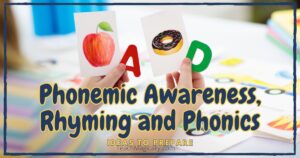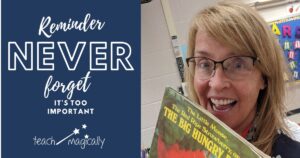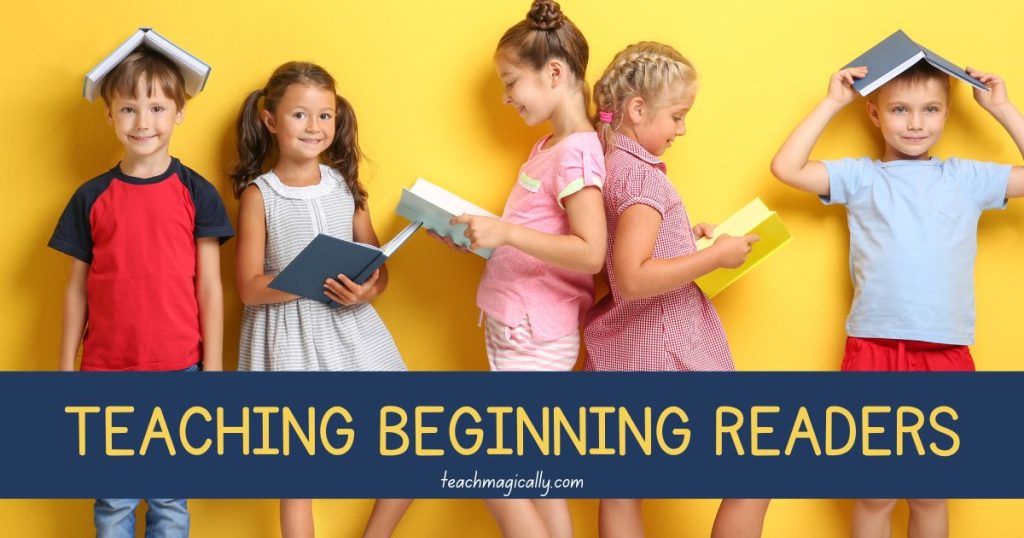
Do you know what’s the best way to teach beginning readers before they are ready to read words? You need to teach beginning readers, especially preschool and kindergarten students, the names of the letters and the sounds.
Research has proven that students who enter kindergarten not knowing their letters are at risk. So if they learn their letters easily, the risk can be diminished. Jan Richardson collected data on students who enter kindergarten knowing less than 40 letters. She concluded that two instructional procedures have quickly taught letter names, letter sounds, and many concepts of print to students that did not know above 40 letters.
They were:
- daily letter tracing practice
- small group guided reading
📌THIS IMAGE FOR LATER
Recommendations
Students should daily trace an ABC book. The ABC book is designed to teach letter names (upper and lower case).
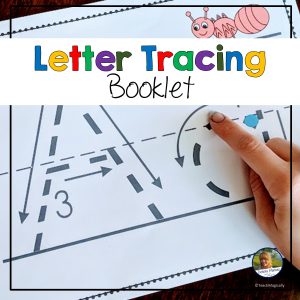
How to Teach Struggling Students
Students should say the name of the letter twice as they trace the letter in the ABC book because students with very limited letter knowledge are likely to become overwhelmed if asked to learn the letter name and letter sound at the same time (Lipson & Wixson, 2010, Successful Approaches to RTI ). I do this to begin a guided reading lesson until I have volunteers. Once a student know the name of the letters add a sticker to the page or let them color that clip art.
When they come to a letter that is known, the student then has to say the picture clue and say the beginning sounds.
How do you teach with the ABC book?
I have found that using arrows and starting dot point to help kiddos trace has made all the difference.
If students know the name of the letter it will be easier for them to remember the sound of the letter since the sound for the letter is often embedded in the name of the letter (Lipson &nWixson, 2010, Successful Approaches to RTI, p. 42) but adding the sound and the picture helps.
HOW TO Teach Beginning Readers
Have kiddos trace each upper and lowercase letter with their finger and identify the picture while saying the names (i.e. “A, a, apple /a/. B, b, ball /b/.”). It’s important for the student to use their pointer finger (not a pencil or marker) and trace from top to bottom because the tactile experience is essential for sending it to long term memory.If the student needs help tracing, only help with the letters that are necessary with the hand-over-hand method.
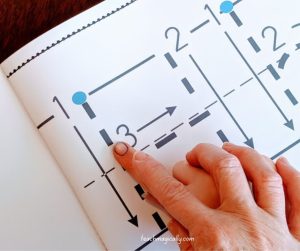
If they can identify 10-40 letters, they will trace then whole book daily. I usually do this in groups because these kiddos don’t need a lot of help.
ADAPT–If a student knows less than 10 letters, just have them only trace the letters in their name until the letters in their names are mastered.
other fun things To help beginnging readers
Other fun ways to work with other phonological awareness skills. Here are a few ideas:
- working with letters-Games for Letter Work
- working with sounds-Songs for Letters and Sounds
- reading a very easy book/poems with the teacher-Alphabet Poems
- writing daily-Writing with Rhyming Posters
These activities integrate a variety of skills including early print concepts (Click here for free concepts of print handout), phonemic awareness, phonics, visual memory, visual scanning, letter formation, directionality, and using picture clues; students learn that reading makes sense.
Catching readers early means we can close the achievement gap and prevent many of them from experiencing difficulty learning to read. Once they know a few letters and a vowel (I teach /a/ first) you can start teaching them how to blend. Check out How To Teach Blending the Right Way
Be sure to follow Teach Magically so you can check out new games and ideas to help children magically learn; plus it saves you time. Please connect on Facebook, Instagram, and Pinterest.
Make everyday magical,
Be sure to follow Teach Magically so you can check out new games and ideas to help children magically learn; plus it saves you time. Please connect on Facebook, Instagram, and Pinterest.
Make everyday magical,
Debora from Teach Magically




